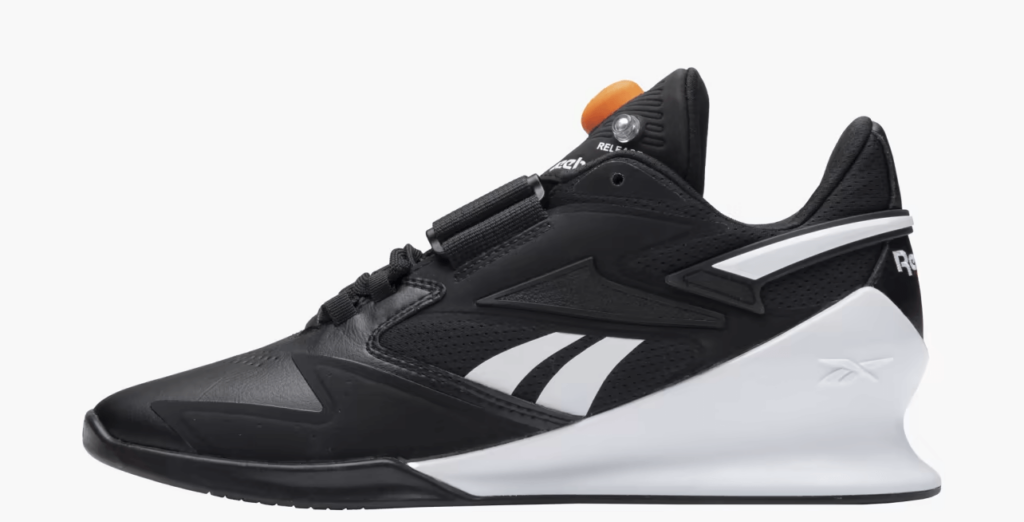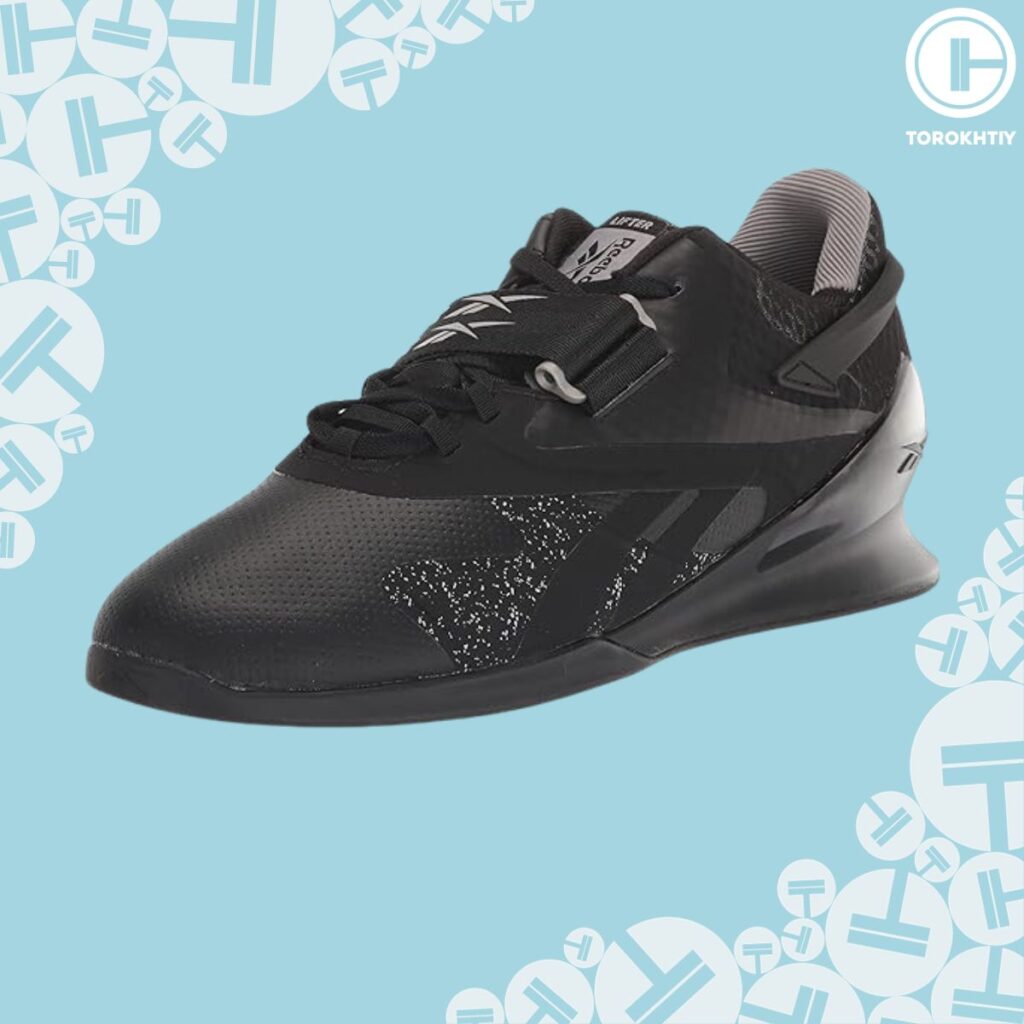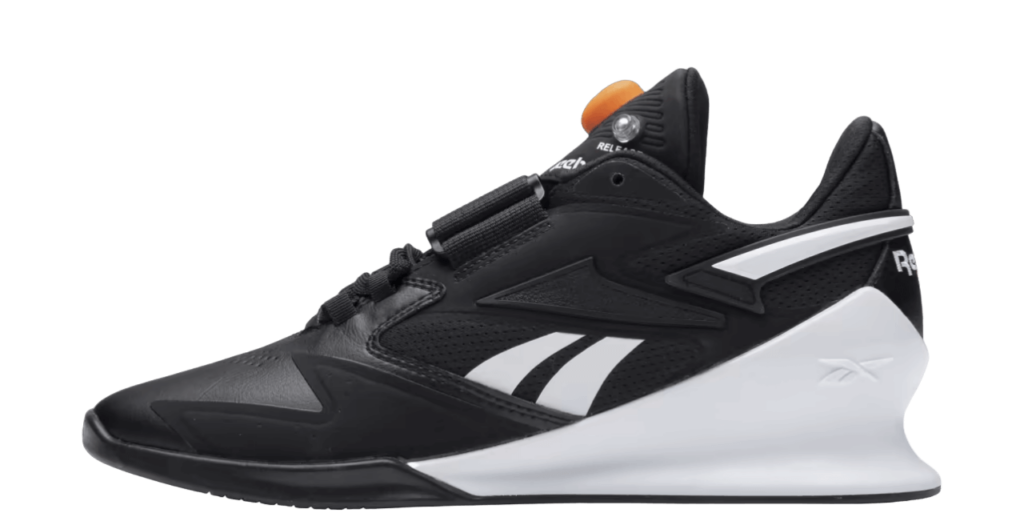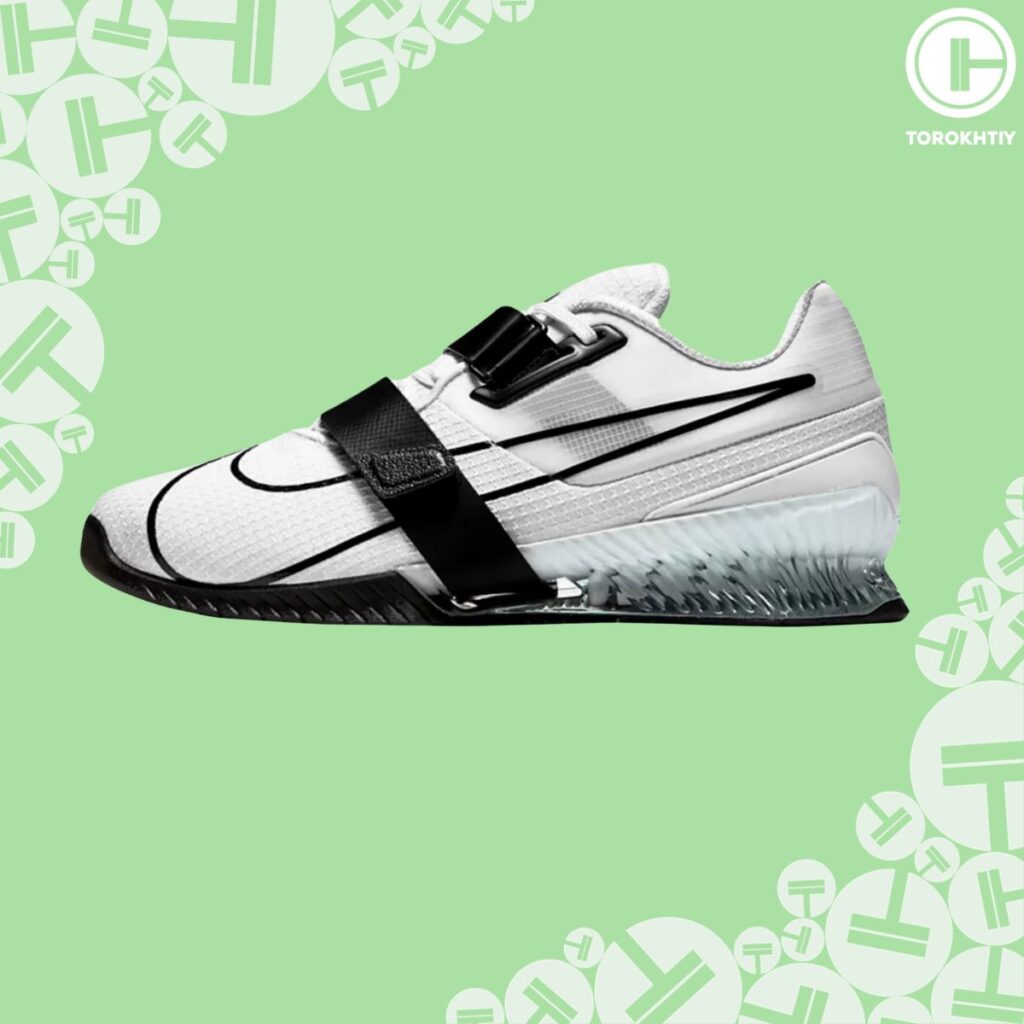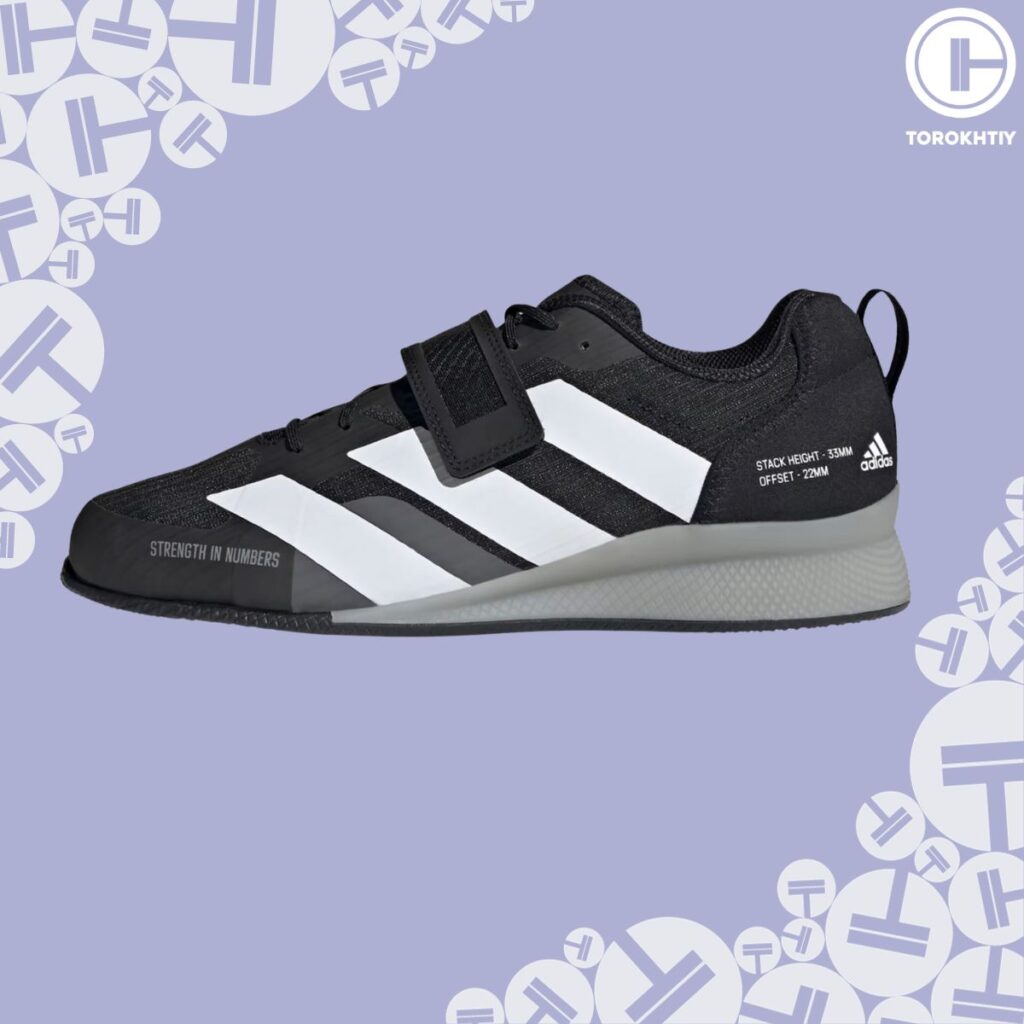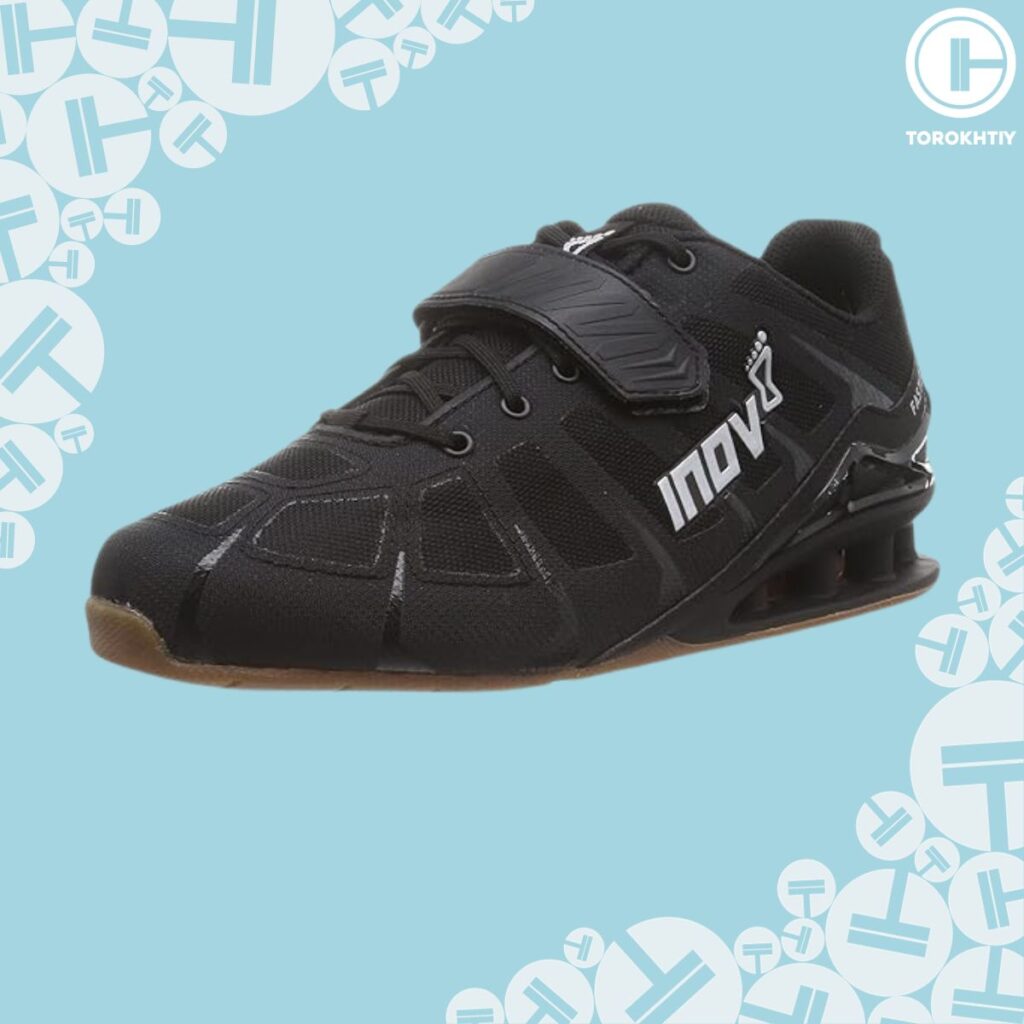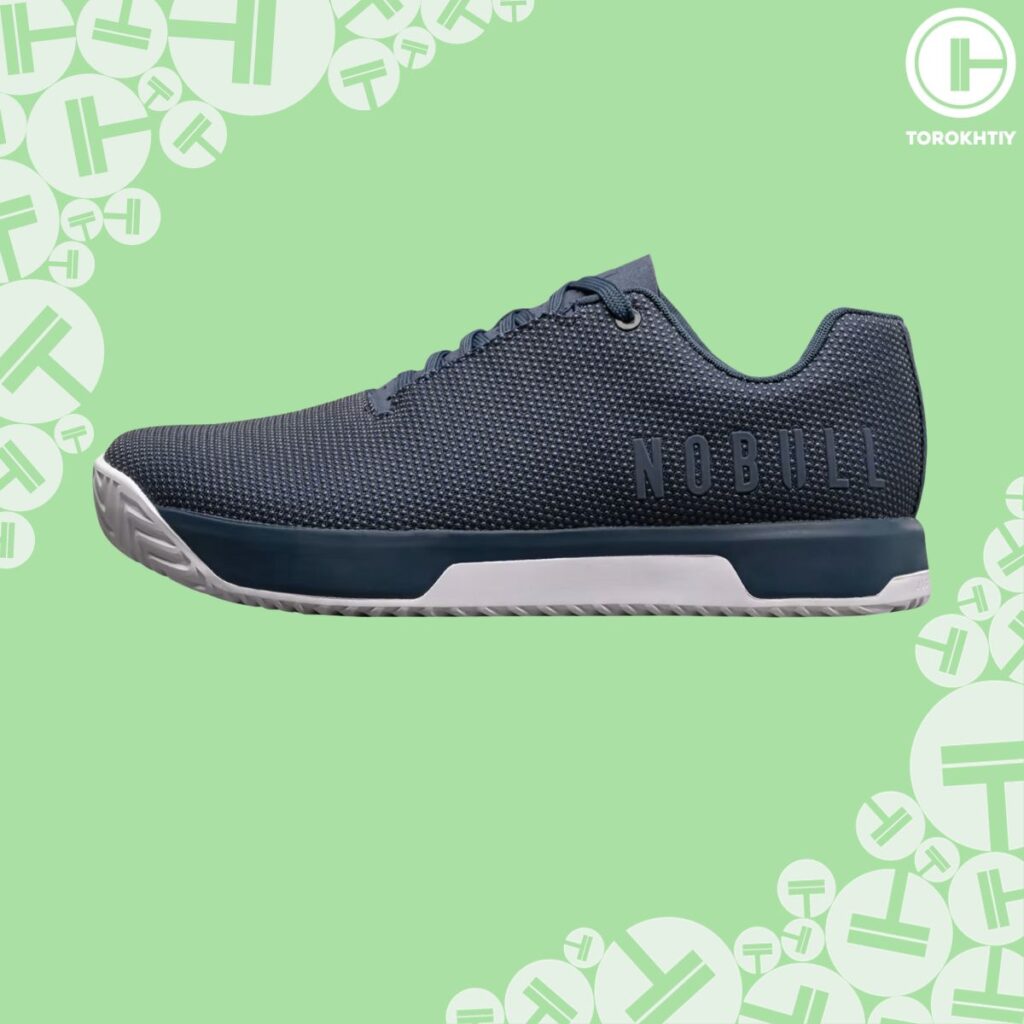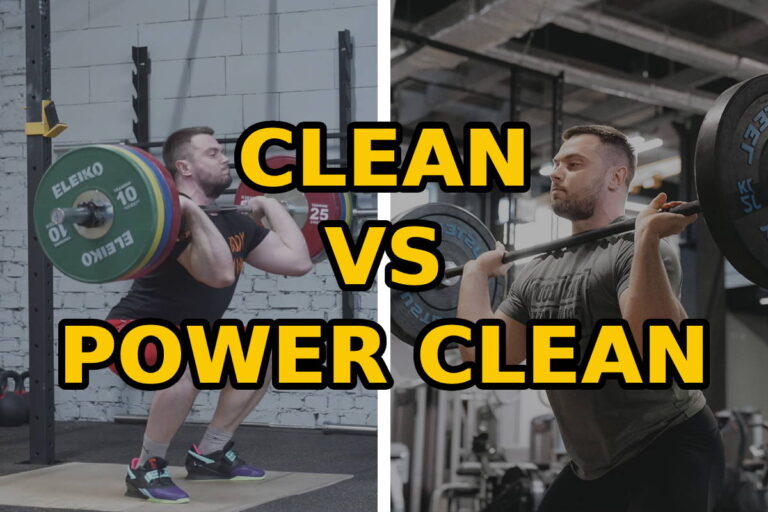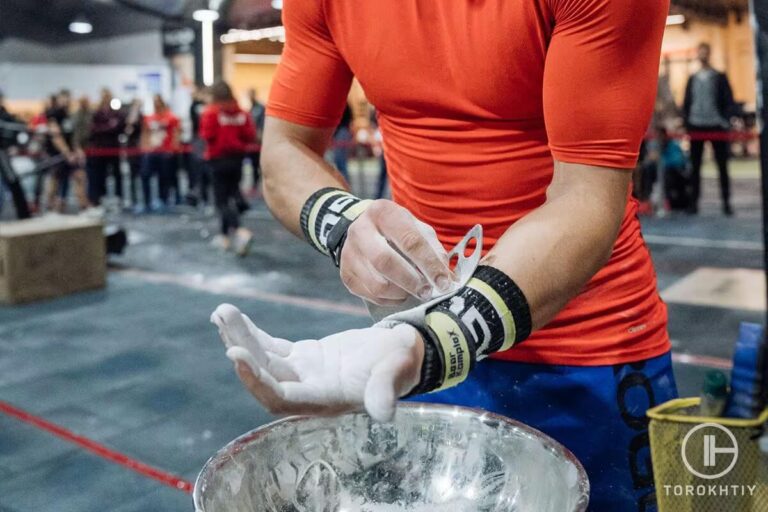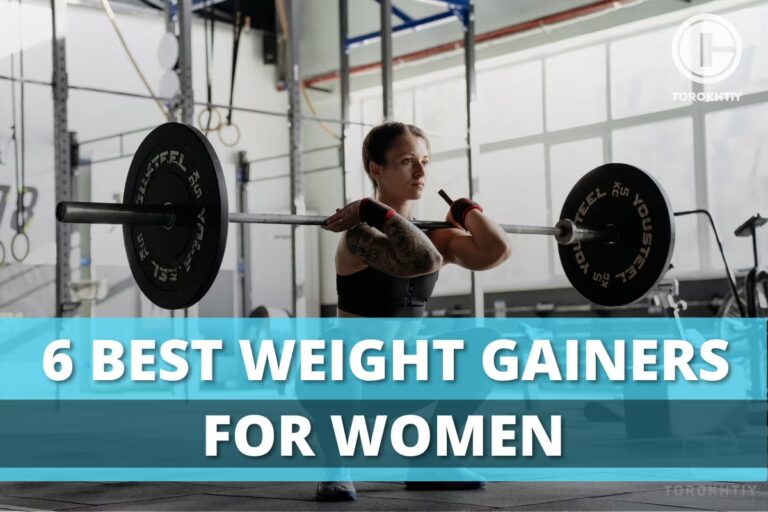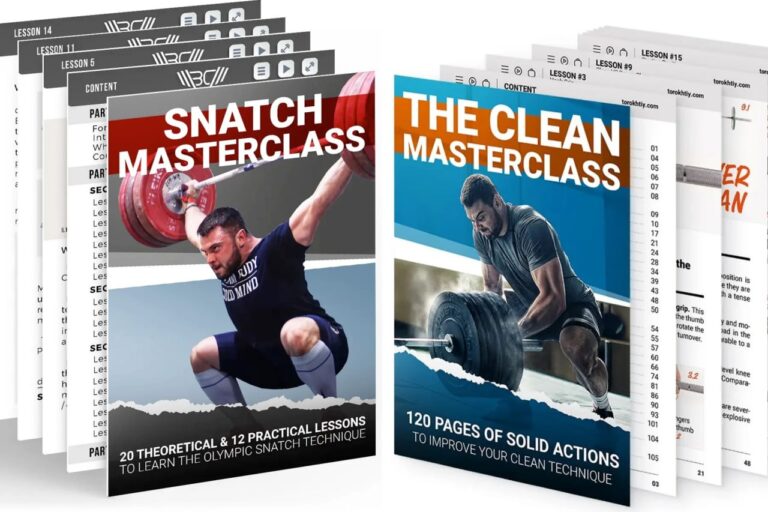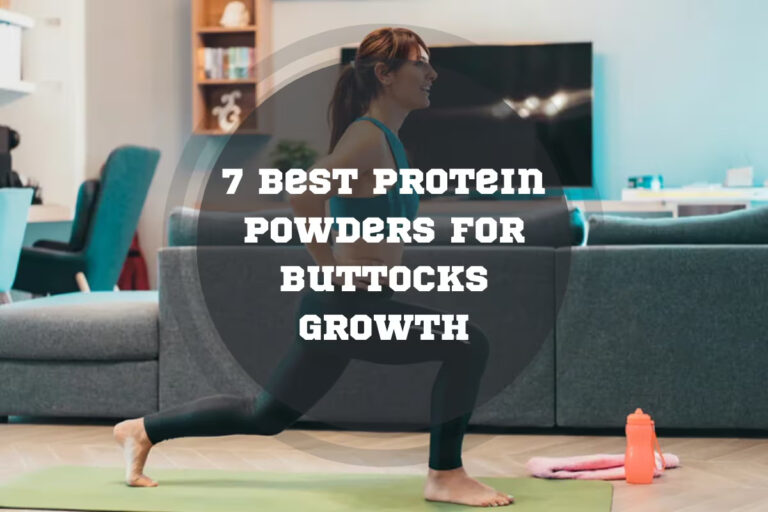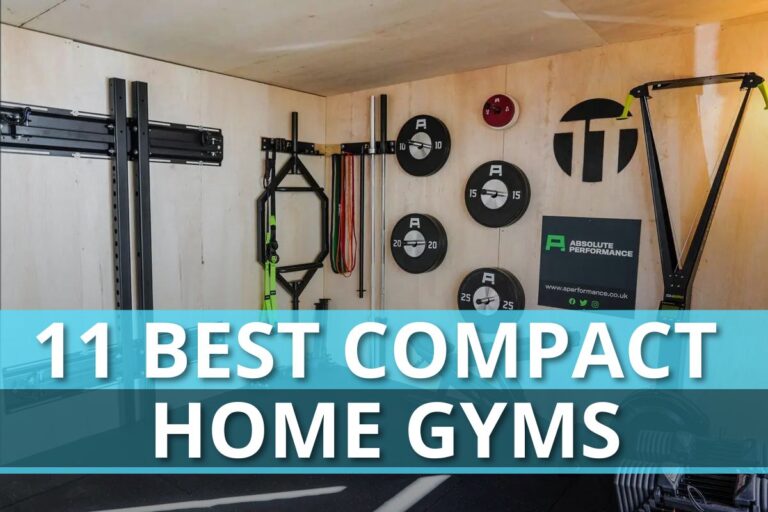6 Best Squat Shoes for Lifting in 2025
Reviewed by: Oleksiy Torokhtiy (21 years of Oly Lifting experience)
Compared to normal shoes, squat shoes offer a range of advantages when lifting. These include better mobility, better technique, increased stability, and more of a feel for the lifting surface. All of these benefits translate into improved performance, making purchasing a pair of squat shoes worthwhile.
Choosing the best squat shoes can be difficult, with different brands offering different designs, heel heights, closure mechanisms, and construction materials. I’ve reviewed my top best shoes for squats and presented them below according to the most important factors.
In a hurry?
In a hurry and can’t keep reading? How about you check out the REEBOK LEGACY LIFTER III.
Reebok has designed an excellent pair of shoes for squatting, giving you some extra design features over the old model and clever touches that add to the lifting experience.
Our team of fitness experts and professional athletes with decades of experience in the field has rigorously tested 18 different squat shoes by focusing on the following criteria: stability, material quality, durability, breathability, and grip.
The testing was conducted over a period of 4 weeks with dozens of hours invested. Thanks to this, our team was able to create this list of the 6 best squat shoes that you can currently acquire on the market.
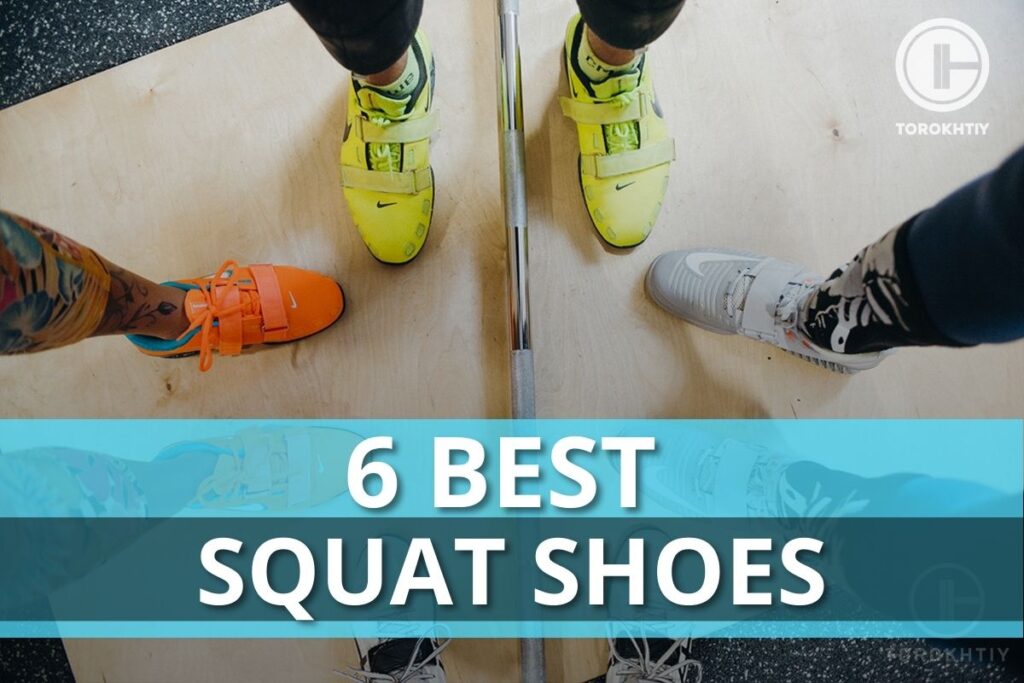
Top 6 Best Squat Shoes Reviewed
- Reebok Legacy Lifter II – Top Pick
- Nike Romaleos 4 – Runner-Up
- Adidas Adipower III
- Reebok Lifter PR II – Budget Pick
- Inov-8 Fastlift 360 – Best for Wide Feet
- NOBULL Trainer+ – Best Cross-Training
| Product | Total | Stability | Materials | Durability | Breathability | Grip |
|---|---|---|---|---|---|---|
| Reebok Legacy | 49.5 | 10 | 10 | 10 | 9.5 | 10 |
| Nike | 48.5 | 10 | 9.5 | 10 | 10 | 9.5 |
| Adidas | 48.5 | 10 | 10 | 9.5 | 10 | 9.5 |
| Reebok Lifter | 48 | 10 | 10 | 9.5 | 9 | 9.5 |
| Inov-8 | 47.5 | 9.5 | 9.5 | 9.5 | 10 | 9.5 |
| NOBULL | 47.5 | 10 | 9.5 | 9.5 | 9 | 9.5 |
Each pair of powerlifting squat shoes have been ranked according to stability, materials, durability, breathability, and grip.
1. Reebok Legacy Lifter II
UPDATE!
Here’s a new model – Reebok Legacy Lifter III that can become a true discovery for those who are fans of the Legacy Lifter model, or their Lifters II are already out.
Despite the model has lots in common with the Legacy Lifter II, it has a novelty – the pump technology which can be useful for enlarging the volume of the tongue. This feature can benefit athletes with narrow feet by bringing better support and security, so the shoes hug the feet wholly.
Reebok is a global fitness brand with the mission statement ‘To be the best fitness brand in the world’. They look to produce revolutionary fitness and lifestyle products to improve fitness and performance.
They have been designed using an anatomical shape, meaning the shoes naturally mold around your feet to offer maximum support and help to transfer force through your feet to the floor.
Compared to the previous version, the ankle collar is higher which gives added support and the lock strap is thicker, adding more stability and keeping the shoes close to your feet when lifting.
The textile upper allows a smooth and comfortable airflow, with the antimicrobial lining helping to reduce heat in the shoe and abrasions when lifting. Alongside this, the shoes have a full-foam lining with an achilles pad for added comfort.
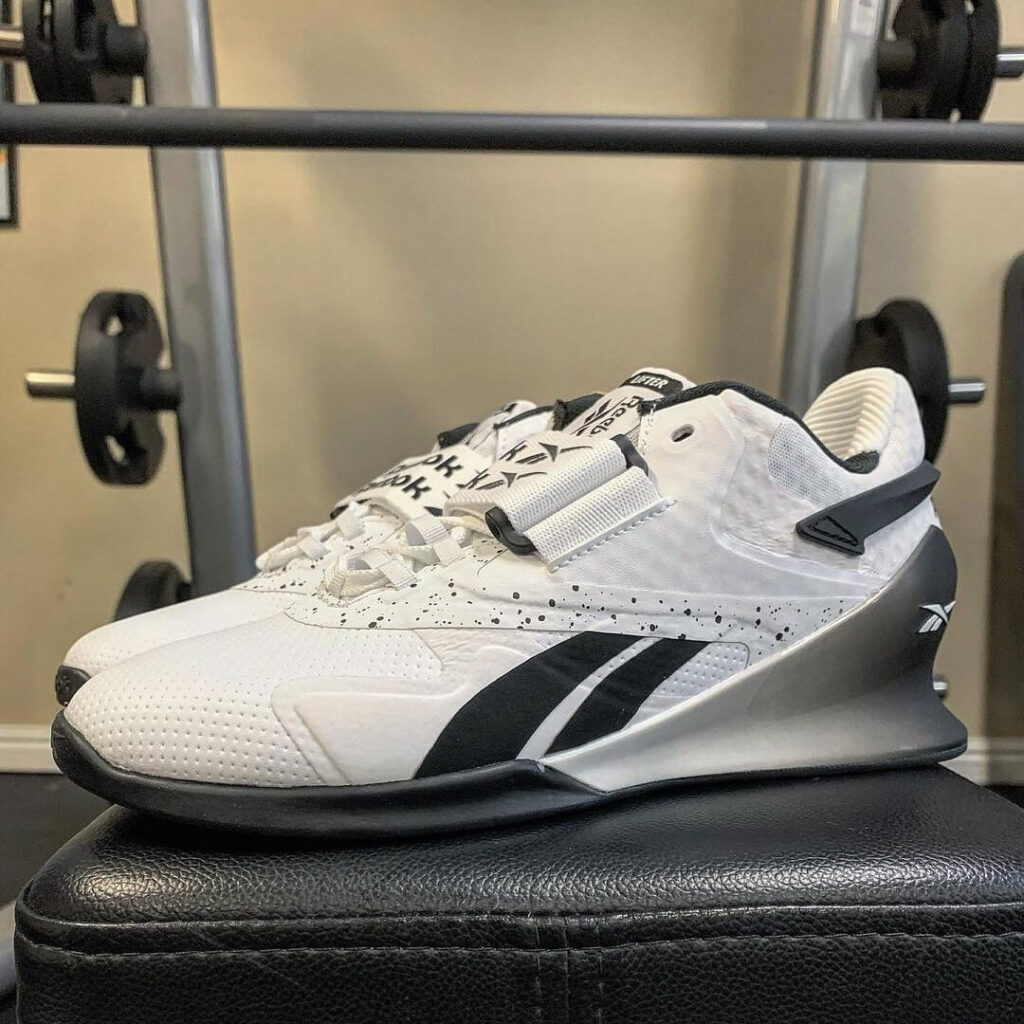
In terms of the heel lift, it’s higher than comparable squat shoes at 22 mm (0.86″ ). This makes the Legacy Lifter II shoes a great choice if you’re someone who struggles with ankle mobility. The heel is made of TPU, which gives you great durability with little compression.
The removable strap is an excellent design feature, allowing you to tighten or loosen the shoes when you feel you need to. The textured traction outsole pattern provides excellent grip with lifting, giving you the confidence to lift without worrying about slipping or moving around.
Reebok has designed an excellent pair of shoes for squatting, giving you some extra design features over the old model and clever touches that add to the lifting experience.
Positives:
Could be better:
2. Nike Romaleos 4
Nike is one of the leading global sports and fitness brands. They aim to create a future of continued progress for all athletes, sports, and the world. Their brand mentality is to foster a culture of innovation and follow a team-first approach.
The Nike Romaleo 4 Squat Shoes have been designed with three main things in mind. Comfort, stability, and performance.
Designed with dual leather lock straps and patterned rubber soles, they provide great platform stability and feel. The design features from Nike really make them feel like a pair of pure weightlifting shoes for squats.
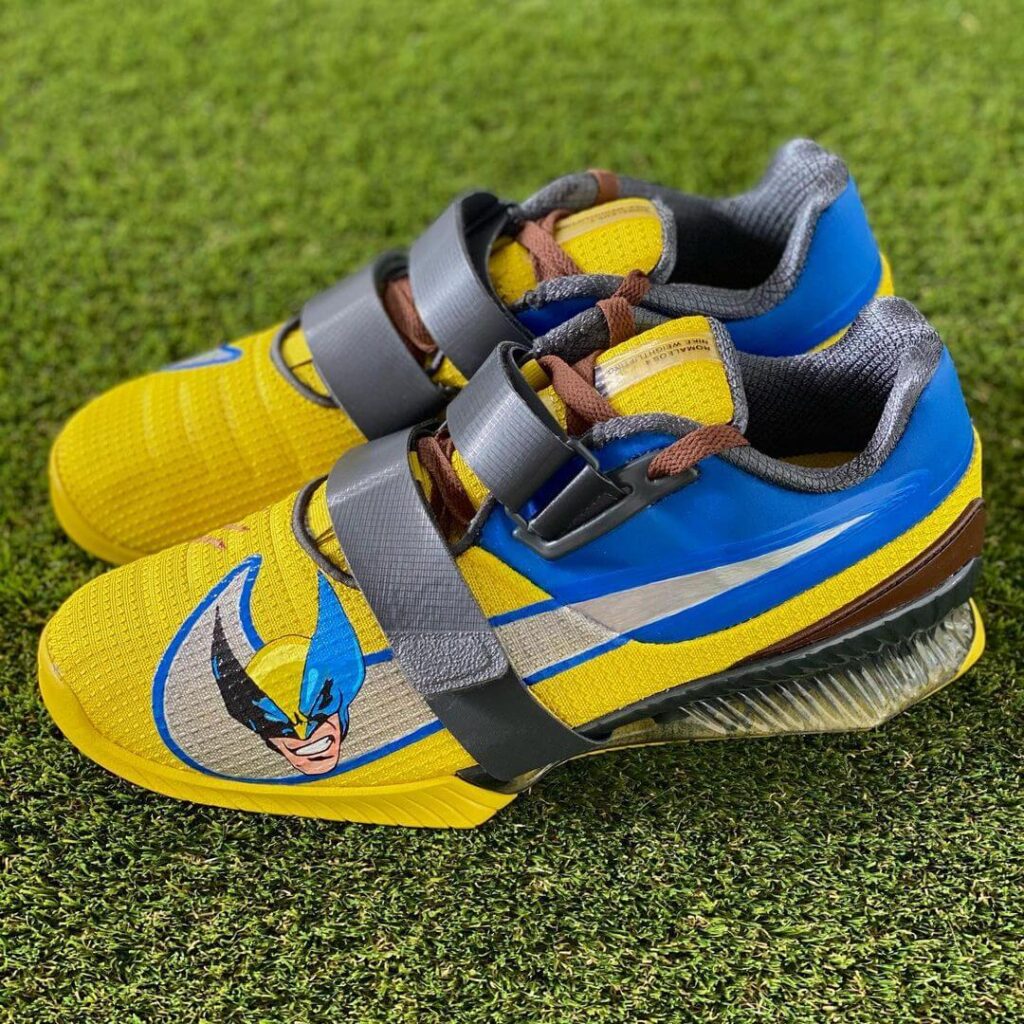
The outsole is wide and flat, with a wider rubber heel featuring a unique rubber pattern to improve grip and feel against the platform. Around the collar of the shoes, the extra padding helps to provide comfort for long-duration, intense workout sessions.
The shoes feature a 20 mm (0.78") heel drop, designed to provide mobility support and improve lifting position. Towards the front of the shoes, the forefoot strap wraps all the way around under the shoe to provide maximum support.
The Romaleos are available in several different colors including white, orange, blue, and black.
Nike Romaleos 4 are excellently designed squat shoes, providing maximum support on the platform. Their design features make them well suited for powerlifting movements such as heavy squats and deadlifts.
Positives:
Could be better:
Adida's design, manufacture, and sell sports and fitness products. Their brand values are fair, authentic, and trustworthy. They look to produce lightweight apparel and footwear.
The Adidas Adipower III shoes have a unique selling point - they are unisex, meaning each shoe size is suitable for both men and women depending on your foot dimensions.
They are specially designed with Olympic lifting in mind, with the lightweight, durable TPU midsole and leather lock strap giving you great stability with no movement restriction when lifting. The textile upper shoe portion allows them to breathe when lifting and keeps the shoes fresh.
Combined with the extra collar padding, the Adipower III shoes are comfortable to wear whilst still providing great performance benefits.
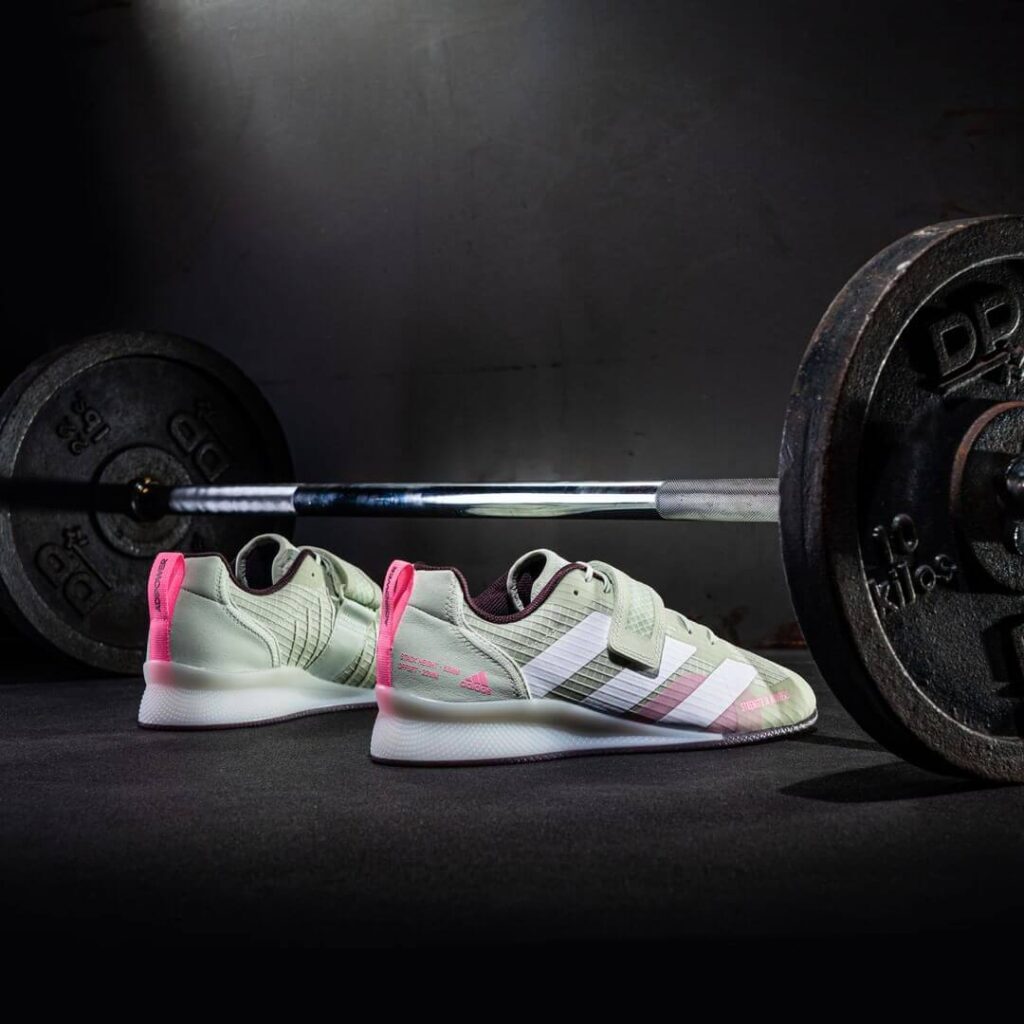
The reinforced forefoot shoe portion provides lateral support when moving and combines with the one-piece rubber outsole to offer excellent grip and traction. These factors will increase lifter confidence when squatting and improve long-term performance when combined with a proper weightlifting program.
The 22 mm heel lift height is at the higher end of the different brand heel heights offered, making this a great option for lifters who are looking for the maximum elevation.
Adidas Adipower III Squat Shoes feature a classic design look and provide both comfort and stability, important factors when looking to improve your squat performance.
Positives:
Could be better:
4. Reebok Lifter PR II
If you’re looking for a mid-range lifting shoe that won’t break the bank, Reebok has the answer. Their Lifter PR II Squat Shoes are designed as a budget-friendly option that can suit a wide variety of athlete needs and goals.
They offer the same great design features as Reebok’s original PR shoes, with some added touches to make them even better.
Compared to other squat shoe options, the Lifter Pr II shoes have a smaller heel height of 15 mm. This makes them well-suited for lifters who are looking for a raised heel but have decent ankle mobility, so don’t necessarily need the extra aid offered by a bigger heel height.
The smaller heel height also makes them a great option for beginner lifters who are looking to transition to squat shoes but need time to get used to the different heel positions when lifting. With the budget price, Reebok has given you a great starter shoe to try.
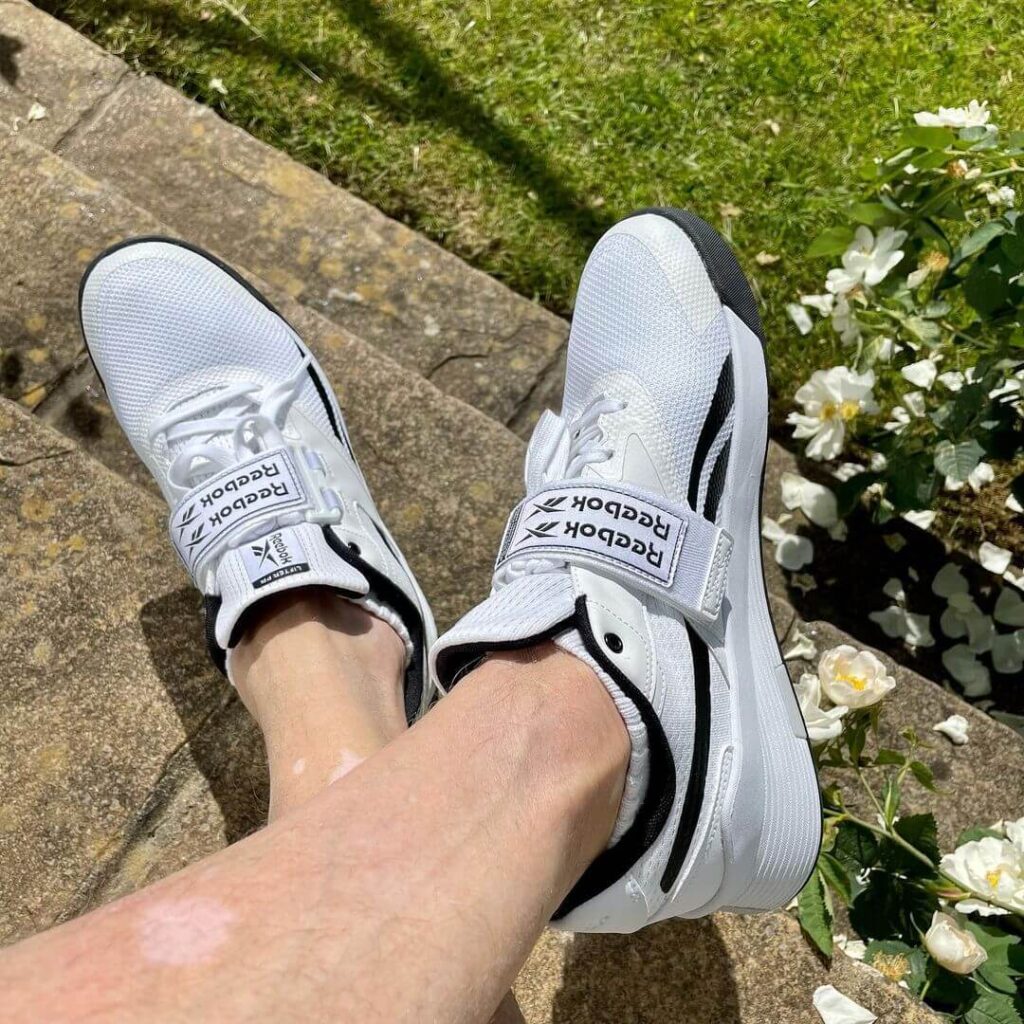
The EVA foam midsole offers lightweight cushioning around the foot, resisting compression whilst providing good stability. The breathable textile upper shoe portion sits comfortably against your foot and allows the shoes to breathe when lifting.
Reebok has included a single thick hook and loop closure strap that sits in the middle of the shoes, with a lace-up system underneath.
The Lifter PR II shoes are available in white/ red and black/gray, with the Reebok branding on the straps and tongue.
Adidas Adipower III Squat Shoes feature a classic design look and provide both comfort and stability, important factors when looking to improve your squat performance.
Positives:
Could be better:
5. Inov-8 Fastlift 360
Innov-8 is committed to providing clothing, footwear, and equipment to athletes and active individuals. They design their products especially for hiking, lifting, and general intense exercise where people want to push their physical boundaries.
If you’re someone who has wider feet and struggles to fit in normal squat shoes, the Innov-8 Fastlift 360 Shoes may be the better option. With a wider fit, they can easily accommodate bigger feet dimensions without restricting movement or rubbing against the skin.
Whilst the Innov-8 brand might not be as well known as my other choices, it certainly belongs on my top 6 list. Innov-8 has designed the shoes using an external heel cage and their Powertruss technology to give you very good support and stability when lifting.
The TPU midsole is secured with a single hook strap which sits over the lace-up system to help keep the shoes in place. The Innov-8 sticky outsole rubber gives you great traction on the platform during fast explosive lifting.
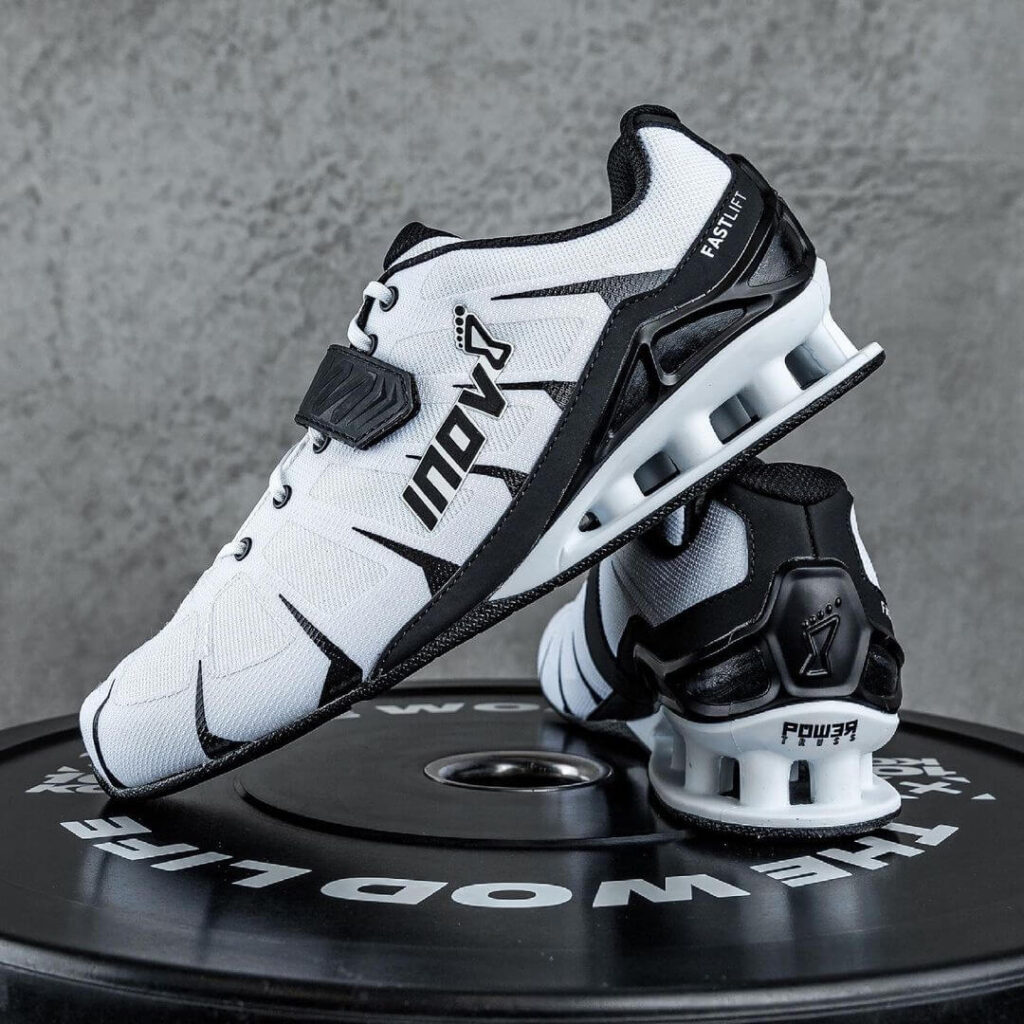
In terms of heel height, the Fastlift 360 shoes sit at 16.5 mm, which is just below the normal higher height used by other brands. This makes the Innov-8 shoes a great choice if you still want a decent heel lift that’s not too big.
The upper portion of the Innov-8 shoes is made with ballistic nylon overlays, a flexible and lightweight material that still offers decent durability. With this, they are one of the more lightweight choices on my lift, making them a great choice for those who want a lightweight heel lift shoe.
Innov-8 Fastlift 360 shoes offer a decent heel height, are made from lightweight materials, and feature a wider shoe design for people with larger feet.
Positives:
Could be better:
6. NOBULL Trainer+
NOBULL is a footwear, apparel, and accessory brand that believes in hard work and no excuses. The brand aims to produce products that perform when you need them. They are also the official sponsor of the Fitness games.
The NOBULL Trainer+ shoes are specifically designed with Fitness training in mind. Whilst they tend to split opinion, they remain very popular throughout the Fitness community and lifting circles and make my top 6.
Compared to the other shoe choices on my list, they offer a very minimal heel height lift at 4 mm. This gives them a rather flat-footed feeling, which makes them a great choice for athletes looking for a lifting shoe who don’t want or need the extra heel height.
With this, you do get a shoe that offers minimal cushioning and less support. However, this gives you much better proprioception and flexibility once you get used to them.
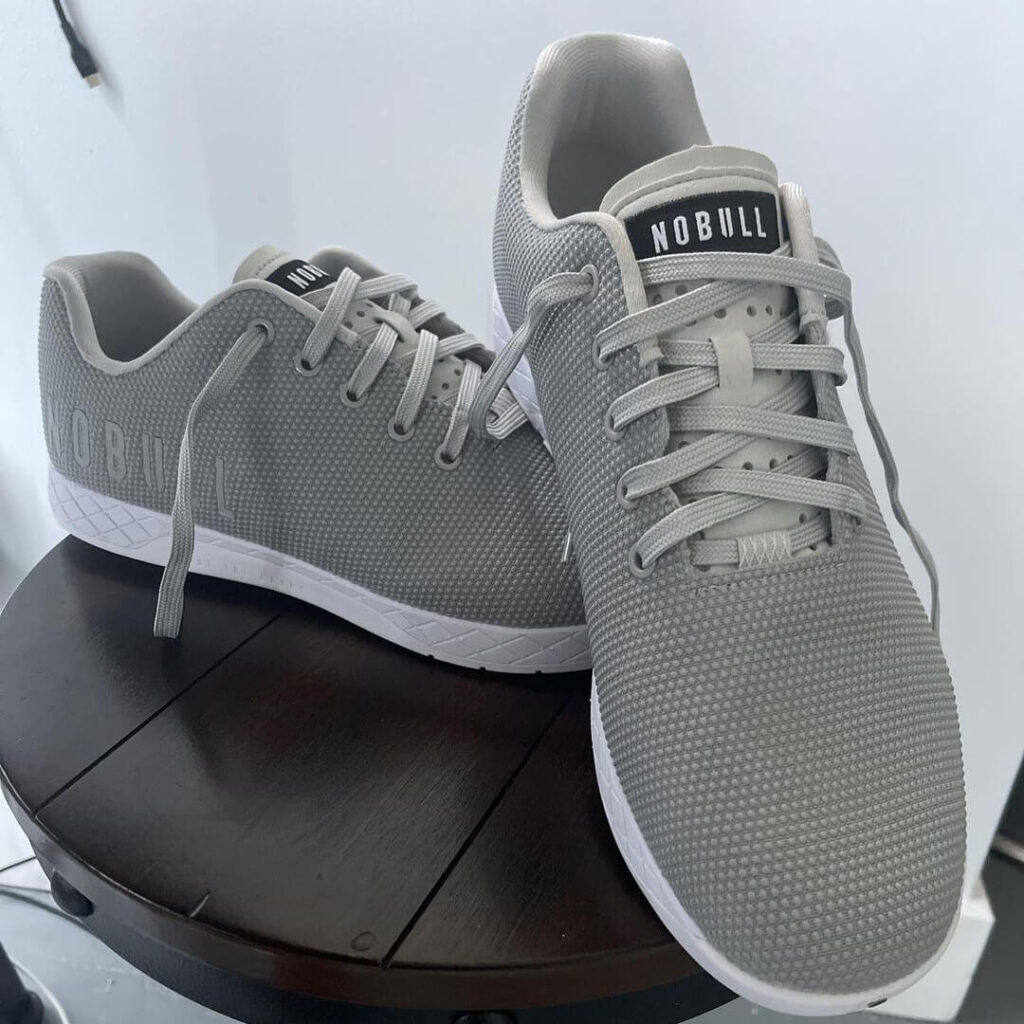
If you like lifting in converse shoes but want something more durable, the NOBULL Trainer+ shoes are just right. With Fitness consisting of multiple dynamic exercises such as burpees, runs, and rope climbs, the extra durability makes them an excellent Fitness lifting shoe.
The outsole is constructed using carbon rubber, which can easily withstand repeated friction or impact. On the upper, the SuperFabric mesh is breathable but still offers good durability. If you want, NOBULL also offers a microsuede upper option if that’s more your thing.
The NOBULL shoes have some nice design touches that help enhance your overall lifting experience. The reinforced heel helps to provide some support, whilst the suede tongue eliminates skin irritation at the top of the shoe.
The sock liners on the inside mold anatomically to your foot shape, whilst the minimal midsole gives the shoes a lower profile, adding to the stability.
Innov-8 Fastlift 360 shoes offer a decent heel height, are made from lightweight materials, and feature a wider shoe design for people with larger feet.
Positives:
Could be better:
Squat Shoes
Squat shoes are hard-soled lifting shoes designed with a heel lift to give you an elevated heel position when wearing them. They are used by lifters in a wide range of lifting events and sports, with factors such as heel height, upper materials, closure mechanism, and type of heel all changing the most suitable use.
When looking at the anatomy of a squat shoe, it can be broken down into four main parts. These are the upper, the midsole, the outsole, and the heel.
The upper is the top half of the squat shoe, commonly consisting of synthetic leather, leather, or PU. Additional layers can be added around the hell area to provide extra support. A large single strap is usually placed over the middle of the foot, with double straps or an additional strap around the ankle included on some squat shoes to offer better support. At the front of the upper, the toe boxes are usually large enough to allow toe splaying.
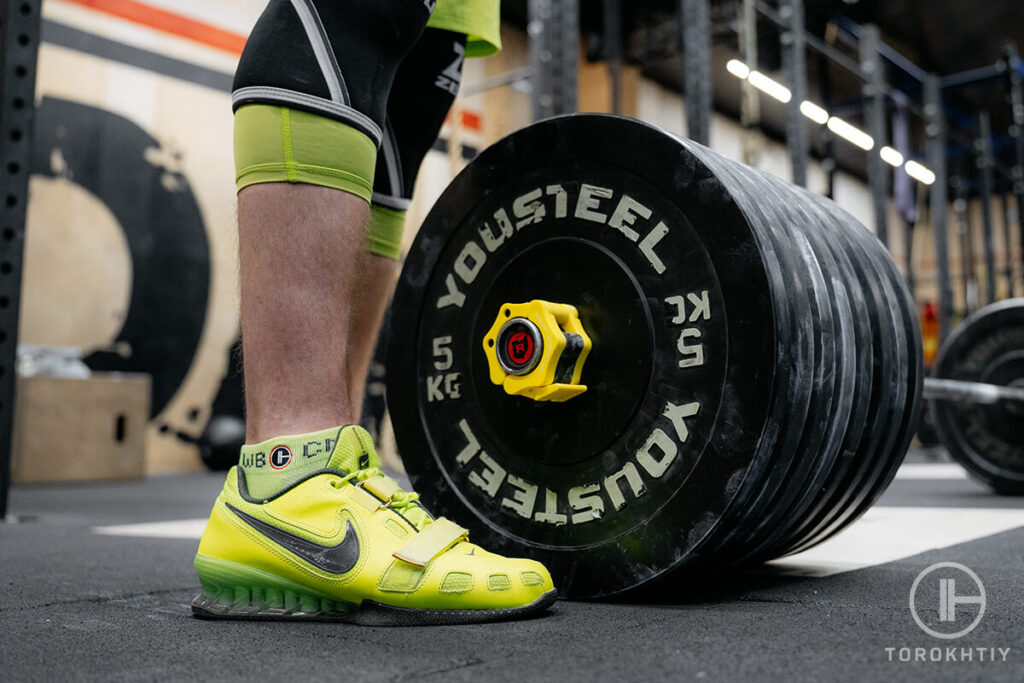
The midsole is the top part of the shoe sole or the part that makes contact with your feet. Most squat shoe midsoles are made of TPU, with some consisting of multi-density EVA. Good midsoles need to be lightweight, offer good support, absorb impact and react to your movement.
The outsole is the bottom portion of the shoe or the bit that touches the ground. It mainly comprises anti-slip textured rubber to provide traction and flexibility. Many brands differ massively in outsole design to offer unique shoe characteristics, with some including small amounts of TPU on the underside.
The heel is the main defining feature of squat shoes that set them apart from normal sports shoes. Heel elevations typically range from ½" to 1" and are made of stacked TPU layers.
Now that you’re more familiar with the anatomy of squat sneakers, here are the pros and cons of wearing them:
Positives:
Could be better:
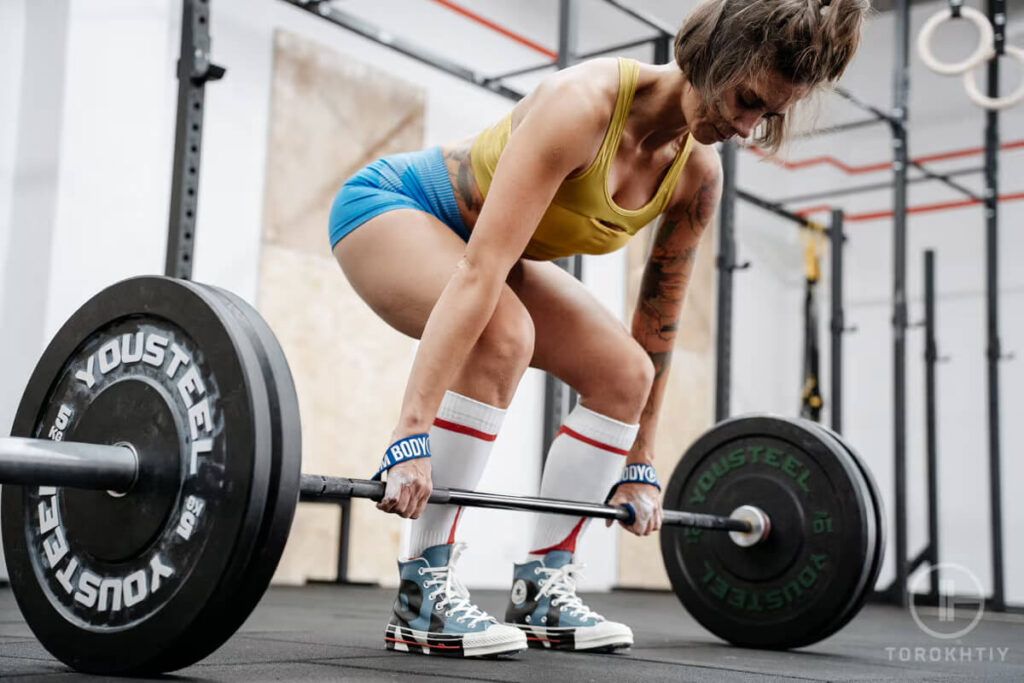
Why Wear Squat Shoes?
Purchasing a pair of shoes to squat in offers multiple biomechanical and performance benefits over using normal shoes:
1. Biomechanics
One of the main considerations when performing back squats is keeping a neutral spine throughout the full movement. Multiple studies have shown that wearing squat shoes helped to reduce forward lean and therefore reduce the amount of stress on the lumbar spine during lifting.
2. Mobility
Due to the heel-to-toe drop built into squat shoes, the tibia bone comes further forward when squatting. This allows the knees to travel forward, compensating for ankle dorsiflexion mobility issues. With this, you’re able to lower your hips further, therefore achieving a deeper squat position compared to not using squat shoes.
3. Performance
Improved biomechanics and mobility lead to better squat performance. By promoting a better lifting position, wearing squat shoes helps to prevent injury and therefore promotes better training periods, positively impacting performance.
An increase in mobility helps you to focus on other performance cues when looking to improve your numbers without focusing on ankle mobility.
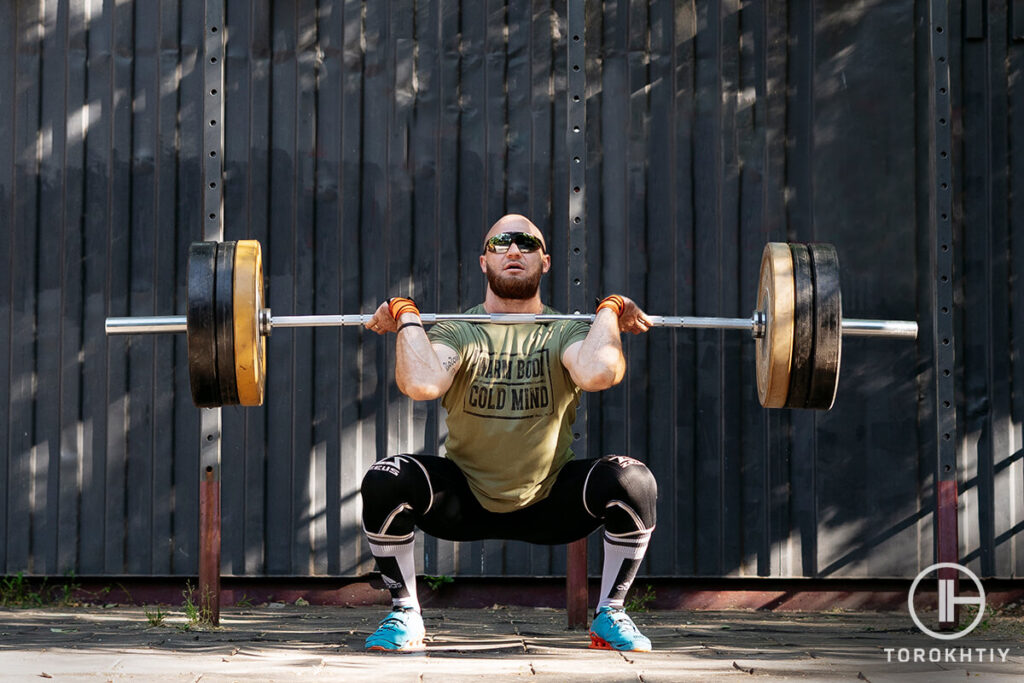
How to Choose the Best Squat Shoes?
When considering the best squatting shoes to purchase, consider these main factors:
1. Heel Elevation
Heel elevation is one of the biggest factors that set squat shoes apart, and also the first thing you’ll notice after putting a pair on.
The height of the heel elevation changes your biomechanics when squatting and therefore can have a huge impact on performance. Lifters who struggle with mobility will likely benefit the most from a bigger heel, as it will help you to keep more upright when squatting.
Conversely, some lifters may prefer the feeling of a flatter squat shoe. The right pair for you comes down to personal choice, body dimensions, and the exercise you're performing.
2. Shoe Closure
Show closure refers to the mechanism used to keep the squat shoes tightly against the feet during lifting. Closure options include single straps, double straps, and lacing, all of which affect the amount of security provided by the shoe.
Double straps with heavy lacing provide the most security, whilst single straps allow more movement but offer less security. The right closure mechanism for you may also depend on the exercise you're performing. Dynamic exercises that require you to shift your weight through your feet may be better suited to single-closure mechanisms.
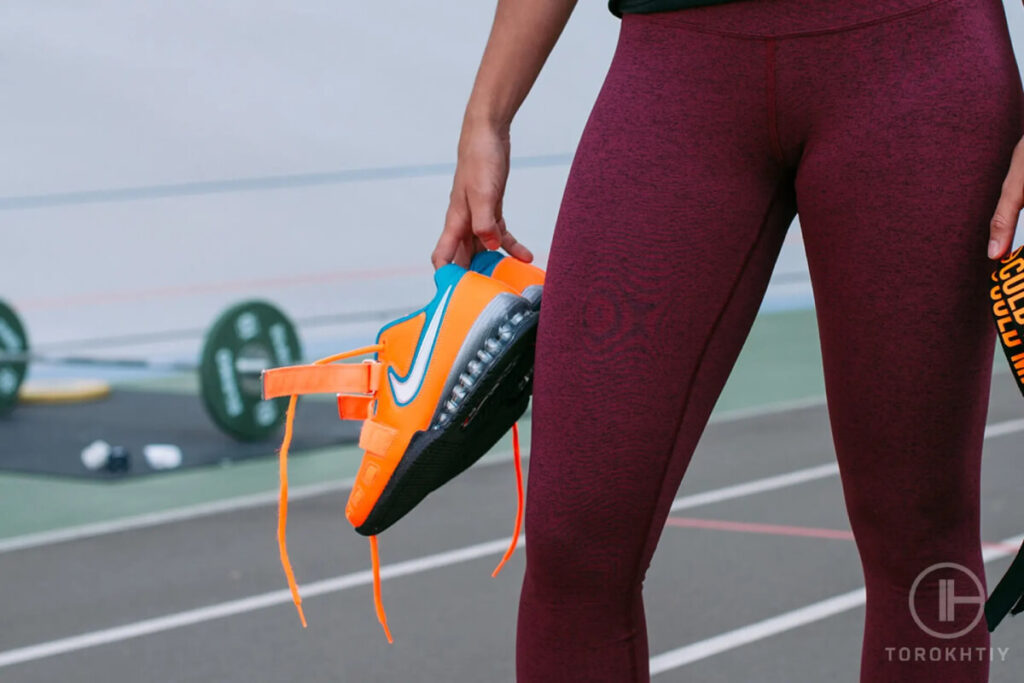
3. Heel Type
Different heel types include TPU, EVA, PU stacked leather, and wood. Each of these materials offers different comfort, stability, and performance. Usually, the right heel type for you is mainly decided by the type of exercise you’re performing and personal taste.
TPU stands for Thermoplastic polyurethane, which is a type of synthetic plastic. TPU heels are resistant to compression, lightweight, and durable. EVA is short for Ethyl vinyl acetate, which is a foam-like material mostly found in the midsole of a squat shoe. EVA provides good support, and shock absorption, and has a bounce when pushed against a surface. EVA is breathable but tends to have less durability compared to TPU and other materials.
Polyurethane (PU) is another form of synthetic plastic found in squat shoe midsoles. It’s more durable compared to EVA but offers less compression and support. Leather heels provide great platform feedback with some compression. Wood hills offer no compression and have an old-school appearance.
Tips From the Champ
To choose the best squat shoes, prioritize heel elevation based on your biomechanics and preferences. Consider the closure mechanism, opting for double straps for maximum security or single straps for more movement. Evaluate different heel types like TPU, EVA, PU stacked leather, or wood, selecting based on your comfort, stability needs, and the type of exercises you perform.
Olympic Weightlifting Champion
4. Shoe Materials
When considering different shoe materials, you need to think about three main factors - comfort, durability, and breathability.
Leather looks nice and offers great durability but may not be as breathable as mesh or textile materials. Having breathable materials makes the shoes more comfortable and lightweight but impacts durability.
5. Training and Sport Type
Before purchasing, consider the type of training and/or sport you’re wanting to use the shoes for. The different designs, materials, and shoe types used provide specific benefits based on your movements and speed.
If your training consists of mostly low bar squats, both raised and flat-heel shoes are well suited. If you perform more high-bar squats, go with a raised heel.
Performing dynamic lifting movements such as cleans and split jerks requires shoes designed using flexible material so it doesn't affect your movement. In this case, leather might not be your best option.
If you're performing lots of high-intensity interval training in an environment where you tend to sweat a lot, a breathable shoe might be a good idea.
These are just some of the considerations to think about when choosing the right shoe for your chosen sport or lifting movement.
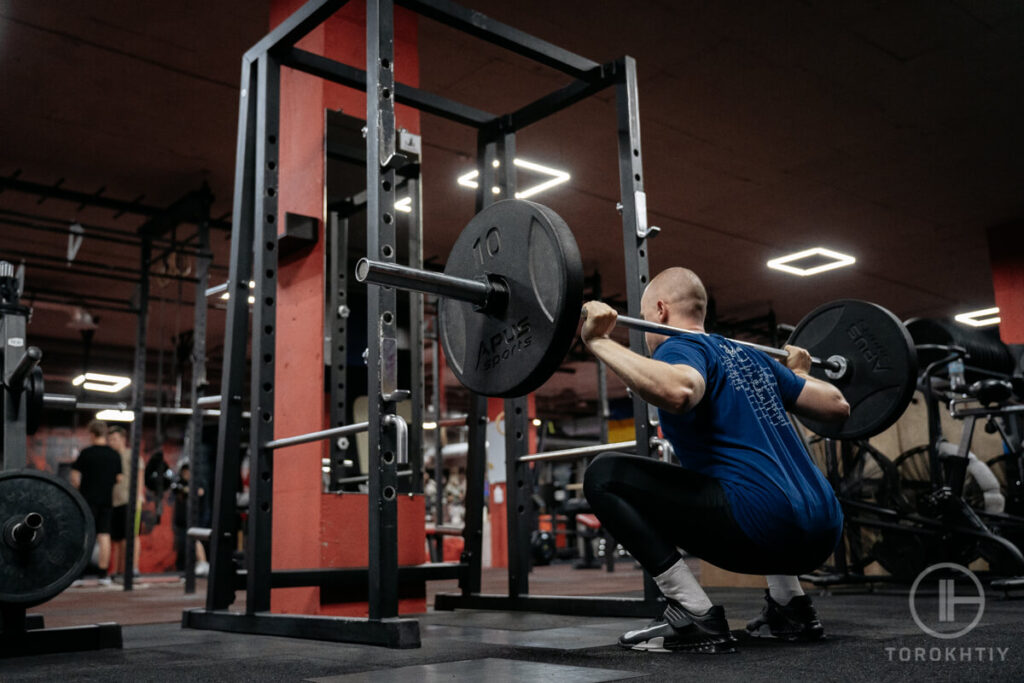
FAQ
Is It Okay to Squat in Running Shoes?
With the kinematics of running completely different compared to squatting, wearing running shoes to squat in isn't advised. If you do choose to wear them, they can make you off balance which impacts the amount of force you can generate off the floor.
Are Squat Shoes Worth It?
Squat shoes may seem like a big investment at first, but they are worth the money when you consider the benefits. Alongside helping to increase your lifting numbers, the heel can help with mobility issues and get you used to the correct movement pattern.
Is It Better to Squat With Flat Shoes?
Squatting with flat shoes vs a raised-heel depends on the squat variation you’re doing and the amount of lifting experience you have. Both flat and raised-heel shoes go well with low bar squats, whilst high bar squats are better with raised heel shoes. If your ankle mobility is fine and you prefer flat-lifting shoes, feel free to use them.
Conclusion
Squat shoes provide a great range of lifting benefits which lead to improved performance. The best oly shoes for squats depend on a mixture of your body dimensions, the exercises you want to perform, and personal choice.
The Reebok Legacy Lifter II Squat Shoes and their new model Reebok Legacy Lifter III are my top pick choice, scoring the highest total for stability, materials, durability, breathability, and grip.
Have you worn any of the shoes I've reviewed above? What differences can you feel when lifting? Let me know in the comments.
Also read:
- Best Running and Lifting Shoes
- Best Running Functional Fitness Shoes
- Best Shoes for Powerlifting
- Cross Trainer vs Running Shoes
- Cross Training Shoe for High Arches
- Best High Top Workout Shoes
- Best Weightlifting Shoes for Women
- Best Shoes for Hiit Workouts
- Best Women’s Cross Training Shoes
References:
- Riley Stefan "Want To Move Better? Try These 5 Mobility Drills For Weightlifting" BarBend. August 16th, 2023 https://barbend.com/mobility-drills-for-weightlifting/
- Jake Boly "Flat Vs Heel Elevated Shoes In Squats | Which Is Best for You?" ThatFitRriend. February 8, 2022 https://thatfitfriend.com/flat-vs-heel-elevated-shoes-squats/
- Sarah Dalton "What Is a Neutral Spine, Anyway?" HealthLine. Published Feb 27, 2018 https://www.healthline.com/health/fitness/what-is-a-neutral-spine-anyway
- Kimitake Sato, Dave Fortenbaugh, David S Hydock "Kinematic changes using weightlifting shoes on barbell back squat" J Strength Cond Res. 2012 Jan;26(1):28-33. https://pubmed.ncbi.nlm.nih.gov/22201687/
- Nicholas Rizzo "The Complete Science-Backed Guide to Lifting Shoes: Barefoot and Beyond" RunRepeat. Posted on 03 November, 2023 https://runrepeat.com/complete-guide-lifting-shoes
Why Trust Us?
With over 20 years in Olympic Weightlifting, our team does its best to provide the audience with ultimate support and meet the needs and requirements of advanced athletes and professional lifters, as well as people who strive to open new opportunities and develop their physical capabilities with us.
All products we select are primarily approved and tested by the Olympic Weightlifting Champion Oleksii Torokhtiy. Under his guidance, we provide honest and reasonable assessments of the products we review by checking their characteristics, packaging, design, comfort and durability features, and general product rating. We select products from only high-quality and trusted sports brands, thus vouching for their quality.
The product testing process is described in more detail here
Author: Ihor Shymechko
Pro Olympic Weightlifter, Coach
Best Results: Snatch – 208 kg,
C&J – 240 kg
Ihor has been a professional weightlifter since 1996, boasting over two decades of competition experience. His notable achievements include clinching the European Championship in 2009 and securing a silver medal in the 105kg division at the Senior World Championships in 2011. Ihor represented his country in the 2008, 2012, and 2016 Summer Olympics. After retiring from competitive weightlifting, he transitioned to coaching, leveraging his vast experience to guide athletes who now compete on both national and international stages.
Reviewed by: Oleksiy Torokhtiy
Olympic Weightlifting Champion
Best Results: Snatch – 200 kg,
C&J – 240 kg
Oleksiy Torokhtiy is a professional athlete boasting 20 years of experience in Olympic weightlifting. With multiple European and World titles under his belt, he has showcased his prowess in two Olympic Games (Beijing 2008 and London 2012). Upon concluding his illustrious career, Oleksiy dedicated himself to coaching. By 2022, he had conducted over 200 weightlifting seminars worldwide. He is the visionary behind an international sportswear and accessories brand known for its motto, “Warm Body Cold Mind.” Additionally, he is an esteemed author and the creator of a series of training programs and eBooks.
If you have any questions/suggestions/any other inquiries considering product reviews, you can reach out to us via email – [email protected]

